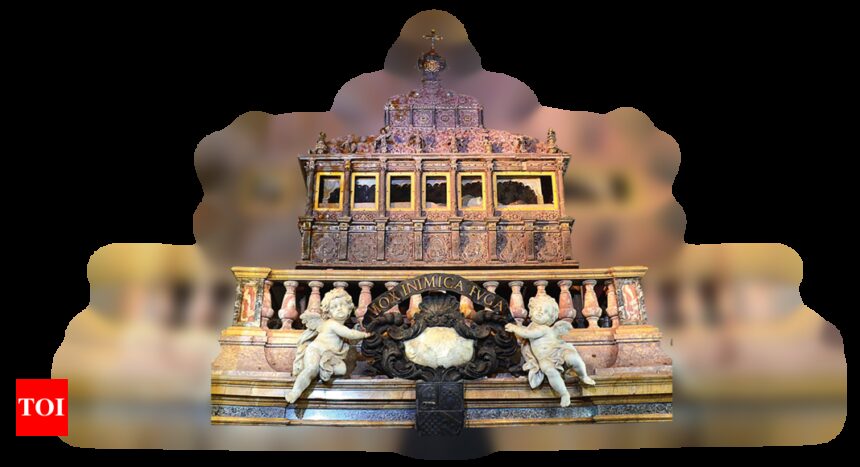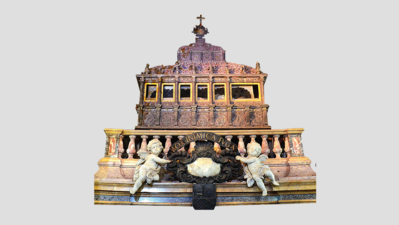
Francis Xavier was born in Spaindied in China, but it was the Portuguese who preserved their legacy in the Asian colonies. Since 1554, the saint’s body has been enshrined in Old Goa, the capital of the State da India, and Goa’s reverence for the saint has not diminished.
Silver Box
In 1624, two years after Francis Xavier’s canonization and a year after Goa learned about it, the holy body was taken in a procession to the chapel of St Francis of Borja in the church of Bom Jesus. The description of this celebratory event indicates that the body was placed in a silver casket – which is very simple and has no aesthetic appeal.
In 1636, the coffin was opened for Fr Marcelo Francesco Mastrilli, who found him unworthy of a saint. Mastrilli’s co-traveller, captain Antonio Teles da Silva, in his will, left a substantial amount for the new chest, while other funds were collected from rich and poor alike. When Mastrilli left for Japan in April 1636, he left the money to the Society of Jesus (SJ).
In 1637, the body was placed in a new silver casket. Made by a Goan silversmith, it is one of the finest specimens of adaptation and penetration of Italian art in India. It combines Italian and Indian art – showing a combination of classical motifs such as Corinthian columns and volutes with Indian filigreed decoration. The pyramid shape at the top of the casket is reminiscent of some Indian ivory caskets or Indian temples.
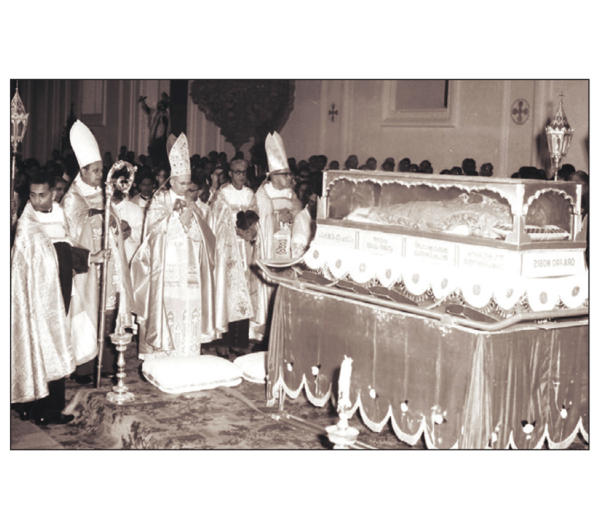
Above the casket is a cross with two angels-one holding a burning heart, the other the legend-‘Satis est – Domine, satis est’ (Enough Lord, it is enough);
The 32 silver plates, described below, depict episodes in the life of Francis Xavier:

- Francis sat on the ground with his hands and feet tied, but the ropes, miraculously, broke.
- Francis kisses a patient’s ulcer in a Venetian hospital
- He was visited by St. Jerome when he was sick in the hospital of Vicenza
- A vision of future apostolate
- A vision of his sister’s prophecy about his destiny
- He saved the Portuguese ambassador’s secretary while crossing the Alps
- He raised a sick man, who died after receiving communion, but had no fever
- He baptized in Travancore
- He encouraged a boy who died in a well in Cape Comorin
- He miraculously healed the sick
- He expelled the Badagas (tribes) in Travancore
- He resuscitated a person buried in Coulao, a boy who was to be buried in Multao, and a small child.
- He took money from his empty pocket and gave it to the Portuguese in Malyapore
- A miracle cure
- The crab retrieves his cross that fell into the sea
- He preached on the island of Moro
- He preached in the sea of Malacca and declared victory over the enemy
- He converted the Portuguese soldiers
- He helped the dying vicar of Malacca
- Francis, kneeling, restores the health of the child on his shoulder
- He walked from Amanguchi to Meaco (in Japan)
- He healed the mute and crippled in Amanguchi
- He treated a deaf Japanese man
- He prayed on the ship during the storm
- He baptized the three kings
Kochi - He treated the religious at St Paul’s college
- Due to the lack of water, they become sweet sea water, during the journey
- Suffering in Sancian (on the way to China)
- After his death, he was seen by women, according to his promise
- His body, clothed in sacerdotal robes, was exposed for public honor
- Francis levitates as he distributes communion at St Paul’s college
- The corpse is placed in a niche in the Chaul (in Maharashtra) with lighted candles

————————————————– – ———————
The battle is for the body
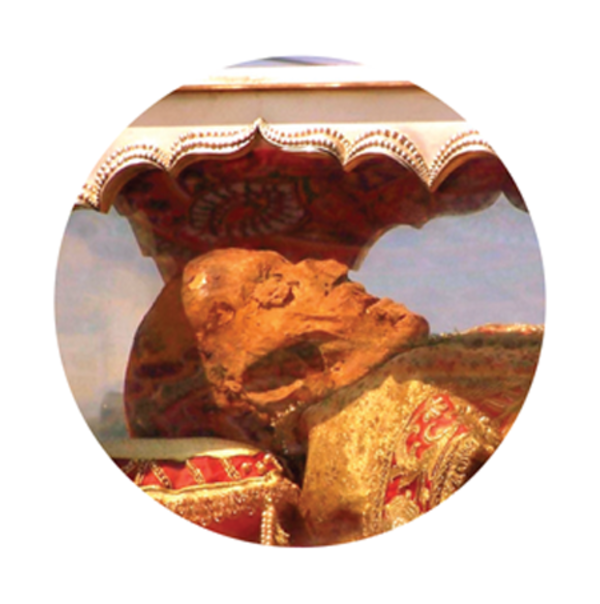
Spain: In 1955, St. Francis XavierThe body was transferred to the present silver casket from the wooden casket, which was the object of a 1976 prisoner petition addressed to the Indian government by the Spanish delegation of the Archbishop of Navarre and the parish priest of the castle of Xavier, Spain. The petition was set aside on the grounds that the casket was an antique and an object of veneration.
Portugal: In 1961, Portuguese PM Antonio Salazar ordered a silver coffin and its contents sent to Lisbon. The order was ignored by the last governor general, Manuel Antonio Vassalo e Silva.
Brazil: In 1961, a group of worshipers from Brazil asked the foreign minister to petition the Indian government to send the body of St. Francis Xavier from Goa to Brasilia.
Citation: ‘Saint Francis Xavier in India’, by Delio de Mendonca
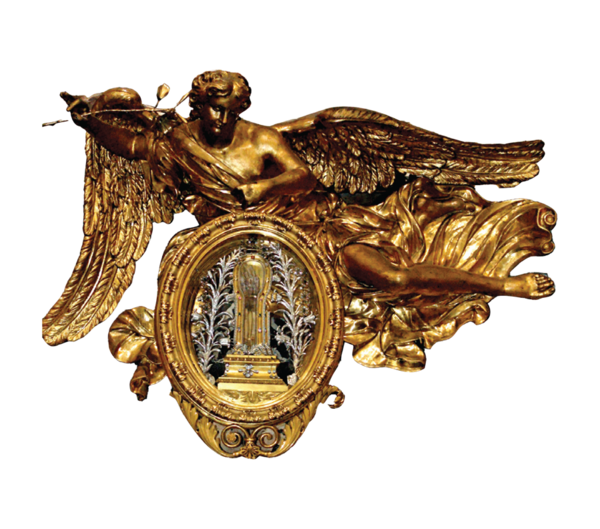
There is a time when collecting relic there is a fad. Francis’ right arm was divided in two separate events – on November 3, 1614, the main part of the arm went into a silver reliquary in the Jesuit mother church, the Church of the Gesù, Rome, while the smaller part went to Malines, Belgium.
The second amputation was in April 1619. The Japanese Jesuits received the upper arm, while the shoulder blade was divided into three parts for each of the Jesuit colleges in Kochi, Malacca, and Macau. Two were lost when the Dutch occupied Malacca in 1643 and Kochi in 1661. The third is at St Joseph’s seminary in Macau.
In 1636, all the remains of the now canonized St. Francis Xavier were distributed as first-class relics in the eastern and western regions.
COFFIN
During the Exposition in 1744, a pine coffin covered with silver cloth and gold lace was made for the saint’s body. He was decorated with purple canvas, silver motifs, and red damask. Inside were gilded mattresses and pillows. There are three locks with three keys – for the archbishop, the governor, and the administrator. This coffin was used for all Expositions until 1952-53
THE WATER
The Cradle, with its beautiful motif, was used to place the relics of St. Francis Xavier for veneration in the Cathedral of Se.
A small wax statue of a body part is kept by the faithful at the foot of the mausoleum as a votive offering to ask for help from the saint to get a cure or relief from illness, disorder or suffering, or simply as gratitude for the favors that have been given.
TOE
When the body of Francis Xavier arrived in Goa in 1554, thousands of people worshiped on the beach, hoping to have a share, but the vigilant Jesuits prevented anything from happening. But during the Exposition that followed, a devout Portuguese woman cut off a toe, while another cut off a piece of flesh.

